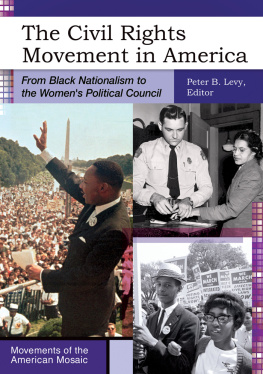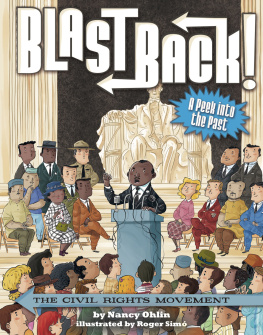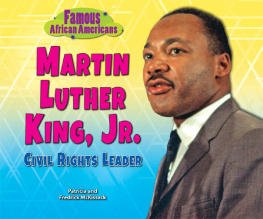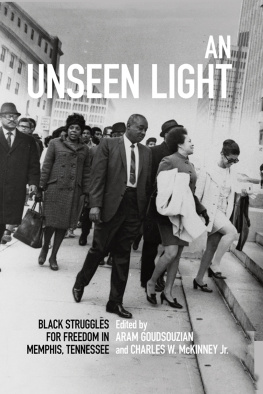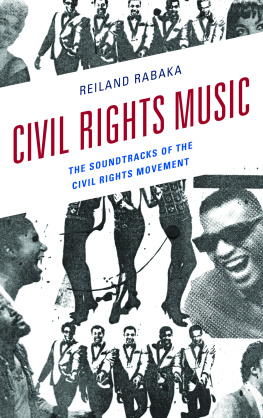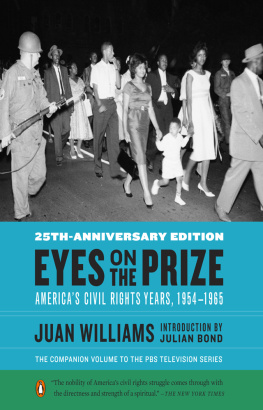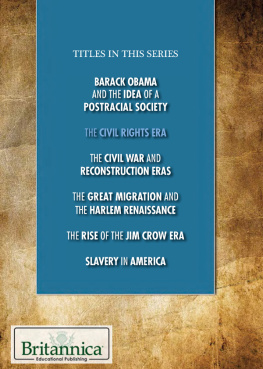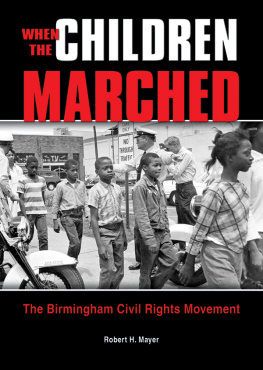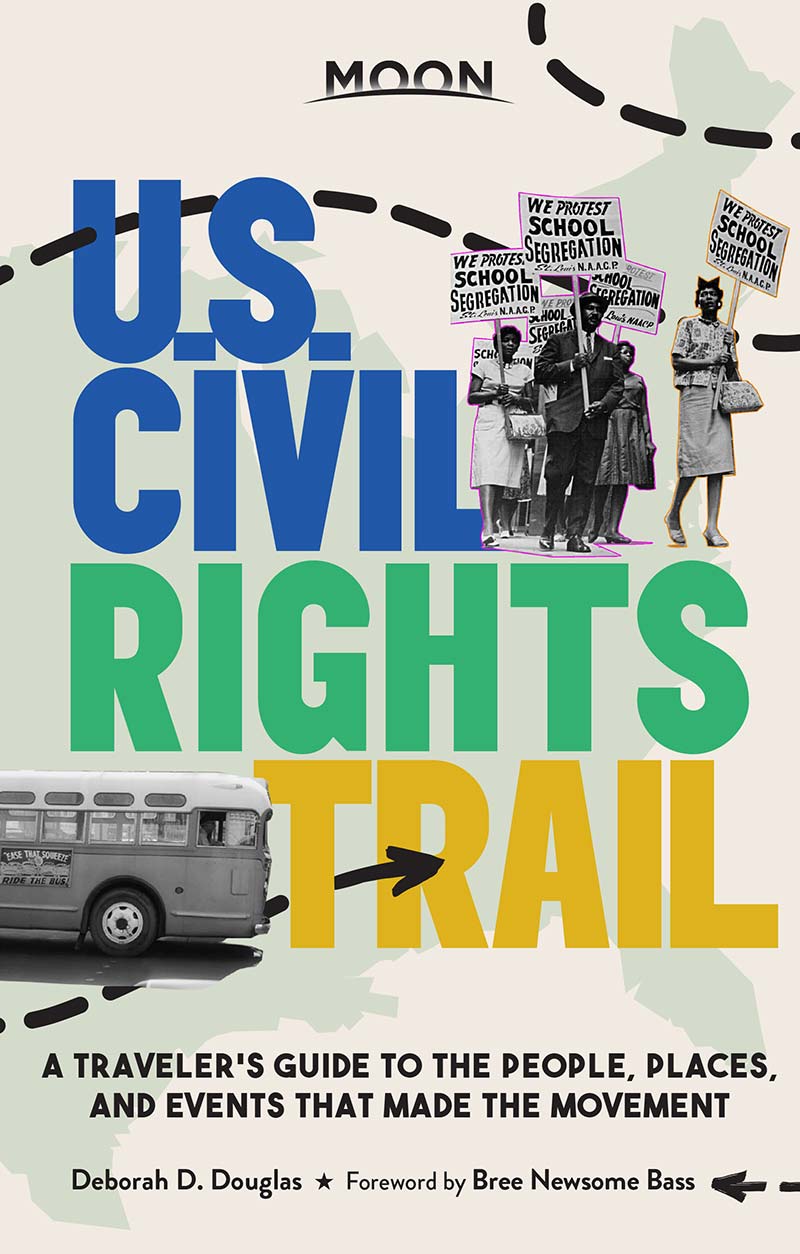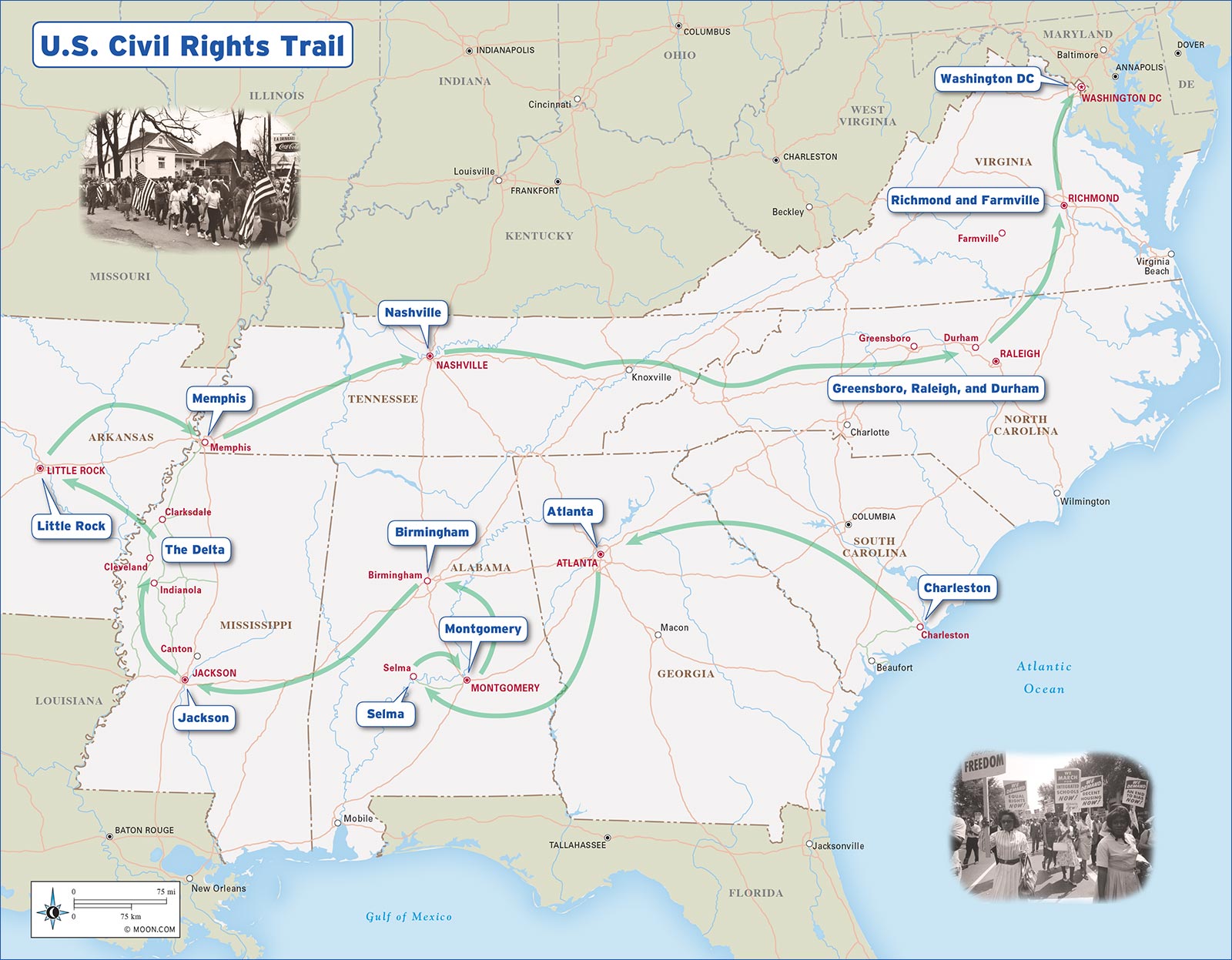Contents
Contents
U.S. CIVIL RIGHTS TRAIL
A TRAVELERS GUIDE TO THE PEOPLE, PLACES, AND EVENTS THAT MADE THE MOVEMENT
Deborah D. Douglas
What fascinates me most about history is how it helps us make sense of the present. History impacts us whether we are conscious of it or not. Becoming aware of it can then empower us to be more than passive, unwitting participants in events as they unfold around us.
Stepping foot on one of the historical sites listed in this guide, the Old Slave Mart Museum in Charleston, was pivotal to the awakening of my own sociopolitical consciousnesspart of a series of events that culminated with me scaling the flagpole at the South Carolina State House in 2015 to lower the Confederate battle flag in an act of protest and civil disobedience. While Id heard stories of my relatives who were enslaved in South Carolina, something about standing in a physical space where African people were bought and sold gave new clarity to the experiences of my ancestors. I imagined what it would mean to exit that space and be separated from my family forever, taken to a place where I might never see them again. The experience stirred my soul and made me feel connected to my ancestors on another level.
My visit to the Old Slave Mart Museum took place during the summer of 2013. Within a month, I would be arrested while participating in a sit-in at the North Carolina State House as part of the Moral Monday movement led by Rev. William Barber II and the North Carolina NAACP.
My visit also coincided with other key events that occurred during that fateful summer. The U.S. Supreme Court gutted the Voting Rights Act of 1965, and my home state of North Carolina wasted no time in seeking to pass new laws clearly designed to disenfranchise Black voters. This was also the summer that George Zimmerman was acquitted in the murder of Trayvon Martin, a Black teenager whom Zimmerman stalked, accosted, and shot while Trayvon was walking home from a convenience store. Like the many young people of the 1950s and 60s who saw themselves reflected in Emmett Till and felt compelled to rise up in protest, I saw myself in Trayvon. As Emmett Tills lynching helped inspire the civil rights movement, Trayvons murder would prove to be a major catalyst for the modern movement popularly known as Black Lives Matter.
I jumped feetfirst into this modern movement, marching countless miles with countless others across the nation demanding an end to a racist system that had persisted for centuries. During this time, I continued to learn about every stride that had been made in this effort prior to now. The more knowledge I gained, the less distant the civil rights movement of the 1960s and the Black Power movement of the 1970s seemed. I considered my own life and my own place in time and asked myself: How much did I owe my freedoms to the actions and choices of those who came before me, those who recognized what was at stake in the times and places they lived? And what would be the consequences of my own actions or inactions?
For all the obvious parallels between past and present, in 2013 I still felt that what we faced was not on the same level as the violence and intimidation that confronted those who came before us. When I was arrested for participating in the voting rights sit-in at the North Carolina State House and found myself handcuffed in the back of a police van, I had no concerns that I would be physically harmed or killed. This only emboldened me to take further action. If those whod come before me had risked life and limb for me to have rights that were now imperiled, who was I to balk at risking arrest in order to preserve those rights?
My sense that modern demonstrations were less dangerous than those from the past quickly evaporated, however. In 2014, I watched as people protesting the killing of an unarmed Black teenager named Michael Brown by a White police officer in Ferguson, Missouri, were met by a militarized police force armed with tanks, sniper rifles, and tear gas. It also seemed that each passing event unearthed another chilling similarity to the past. This was especially true in June 2015, when a White supremacist shot and killed nine Black people during a prayer meeting in Charlestons Emanuel African Methodist Episcopal Church. The violence of that event was something wed not yet seen in the modern iteration of the movementa terrorist attack akin to the 16th Street Baptist Church bombing that killed four little girls in Birmingham in 1963.
By 2015, two things were clear: that we werent any more removed from violence or the threat of death than Black activists had been in previous generations, and that acts of racial terrorism can happen anywhere. It seemed that the more we demanded a reckoning on racial justice, the more we exposed the racist underbelly of our nation. One day before the terrorist attack in Charleston, the man who would become the 45th president of the United States descended a golden escalator to announce his candidacy, running on a platform of hate, anti-immigrant sentiments, and racist conspiracy theories about the nations first Black president.
It was under these circumstances that I coordinated with a team of activists to lower the Confederate flag on June 17, 2015. There was never any doubt as to what that flag meant, and what it signaled to Black people in that region. It had been flying on the state house grounds since the 1960s, when it was raised as a statement of opposition to sit-in protests and an increasing pressure to end legal segregation in the state. I was a teenager in 2000 when, after a belabored act of compromise on the part of the South Carolina legislature, the flag was moved from its original location over the dome of the state house to a flagpole on the lawn. At the same time, the South Carolina Heritage Act was passed to further protect the flags placement on state house grounds. Part of that law required a two-thirds approval in the state house to lower the flag for any reasonan impossibly high bar usually reserved for constitutional amendments. And so it remained in the aftermath of the Charleston massacre, flying high at the top of its 30-foot pole, even as the United States and South Carolina state flags were lowered to half-mast in recognition of the lives lost at Emanuel A.M.E.
My decision to lower the Confederate flag was both an act of civil disobedience and a way of demonstrating that we would not allow ourselves to be ruled by the acts of racial terrorism that have persisted for centuries. That act of protest became one of the most iconic moments of the modern movement, compelling the state of South Carolina to permanently remove the flag 13 days later and inspiring similar actions around the country. I couldnt have done any of it had I not been armed with an awareness of history and knowledge of the long-standing tradition of nonviolent civil disobedience that I consciously became a part of in that moment. As I scaled the flagpole in South Carolina, a Black woman descendant of people whod been enslaved there, my climb symbolized the struggle of an entire people. As I brought the flag down, it was a reminder of all that we have overcome and will continue to overcome.


